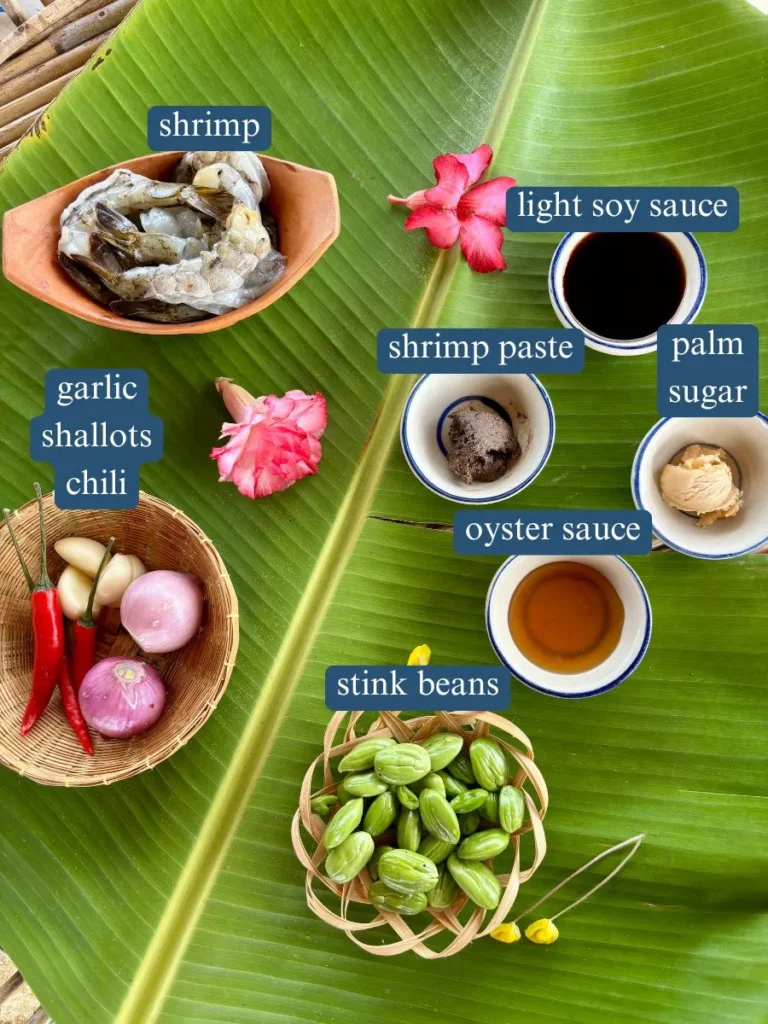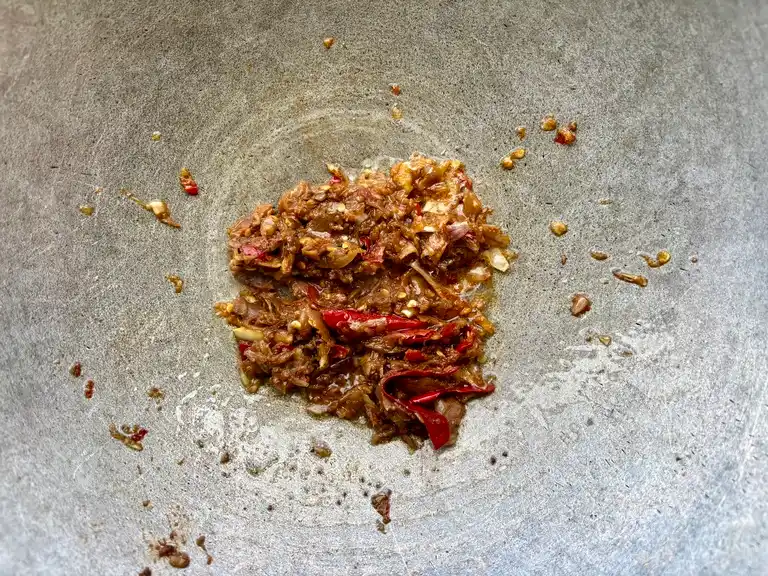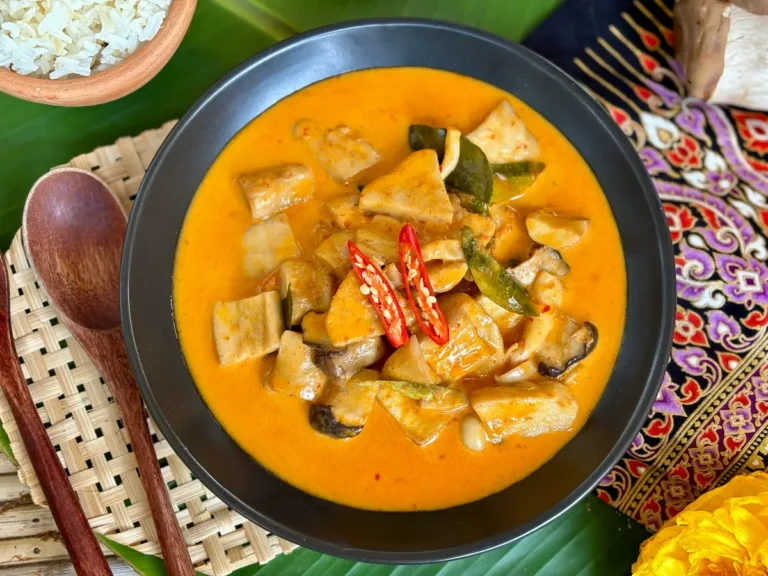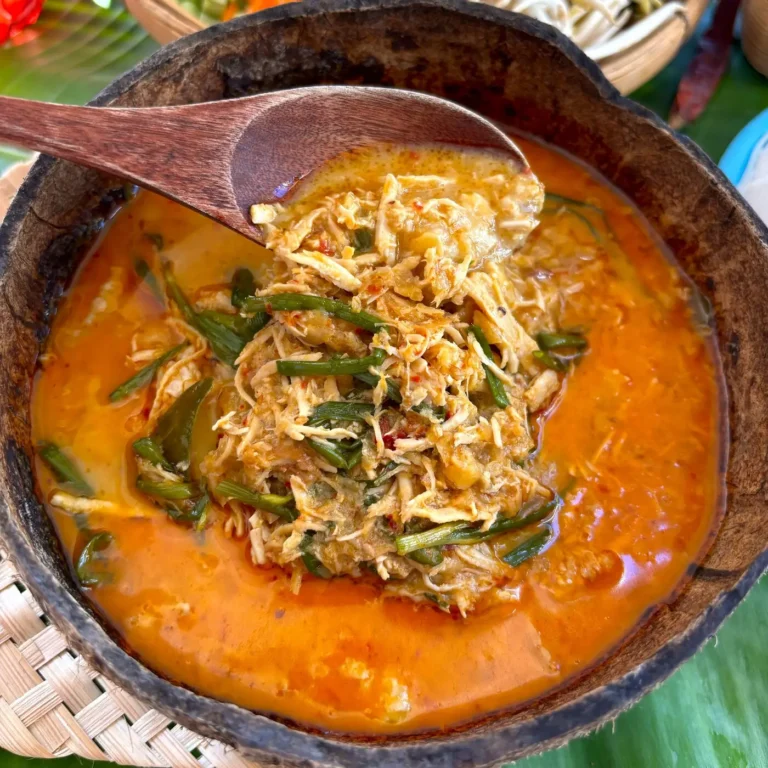This Thai stink beans stir-fry with shrimp recipe brings bold, spicy flavors in an umami-loaded stir-fry sauce. Ready in less than 30 minutes and perfect with rice for a quick and easy dinner any day of the week!

For more delicious vegetable stir-fries with shrimp, check out this bitter melon recipe, long beans stir-fry, and shrimp with bean sprouts!

Pad sataw
Pad sataw is the Thai name for this stink beans with shrimp recipe. It’s a bold and flavorful stir-fry that’s especially popular in Southern Thai cuisine, where dishes are known for their fiery spice—and this one is no exception.
The stink beans bring a slight bitterness and crunch that pairs great with the juicy shrimp. Tossed in rich sauces, everything comes together in a hot, umami-packed dish with bold, unforgettable flavors.

I recommend serving it with jasmine rice to balance the dish’s bold flavors. For a light side, try som tum Thai or a healthy vegetable stir-fry.
Ingredient notes
Everything you need is available at Asian grocery stores or Asian markets. For precise measurements, check the recipe card below!

- Stink beans
- Shrimp – The best shrimp for stir-fries are large varieties like black tiger shrimp or jumbo prawns. Feel free to use other proteins like chicken, pork, or beef.
- Shallots
- Garlic
- Fresh chili peppers
- Light soy sauce
- Oyster sauce
- Shrimp paste – This is a fermented seasoning made from ground shrimp and salt that adds umami and depth to Thai food.
- Palm sugar
- Oil – Use neutral oils with a high smoke point, such as vegetable oil or canola oil, ideal for stir-frying.
Step-by-step image instructions
Step 1: Peel the stink beans carefully by slicing the pods open with a knife, then remove the beans. Discard the shells.

Step 2: In a mortar, pound garlic, shallots, and red chilies. Then, mix in the shrimp paste until you achieve a rough paste.

Step 3: Heat oil in a wok over medium-high heat. Add the prepared paste and stir-fry until aromatic.

Step 4: Add oyster sauce, light soy sauce, palm sugar, and water. Stir well, allowing the flavors to combine.

Step 5: Toss in the shrimp and stir-fry until they are just cooked, turning pink, about 1–2 minutes.

Step 6: Add the stink beans and stir to coat them in the paste. Remove from heat and serve hot over steamed rice. Enjoy!

How to store and reheat
- Storing: Let the leftovers cool to room temperature before transferring them to an airtight container and refrigerate within 2 hours of cooking. It can be stored in the fridge for up to 2–3 days.
- Reheating: Reheat in a pan over medium heat for the best flavor and texture, adding a splash of water if the sauce has thickened. Alternatively, microwave in 30-second intervals, stirring in between until heated through.
More spicy Thai stir-fries to try next
Love this Thai stink beans recipe with shrimp? Please make my day by dropping a star rating and/or a comment below! Follow me on social media: Facebook, Instagram, and Pinterest.
Thai Stink Beans Stir-Fry Recipe With Shrimp (Pad Sataw)

Ingredients
- 50 g stink beans
- 3 cloves garlic
- 40 g shallots, chopped
- 3 chili peppers
- 15 g shrimp paste
- 30 ml oil
- 15 ml oyster sauce
- 15 ml light soy sauce
- 7.5 ml palm sugar
- 90 ml water
- 6 large shrimp, peeled and deveined
Instructions
- Peel the stink beans carefully by slicing the pods open with a knife, then remove the beans. Discard the shells.50 g stink beans
- In a mortar, pound garlic, shallots, and red chilies. Then, mix in the shrimp paste until you achieve a rough paste.3 cloves garlic, 40 g shallots, 3 chili peppers, 15 g shrimp paste
- Heat oil in a wok over medium-high heat. Add the prepared paste and stir-fry until aromatic.30 ml oil
- Add oyster sauce, light soy sauce, palm sugar, and water. Stir well, allowing the flavors to combine.15 ml oyster sauce, 15 ml light soy sauce, 7.5 ml palm sugar, 90 ml water
- Toss in the shrimp and stir-fry until they are just cooked, turning pink, about 1–2 minutes.6 large shrimp
- Add the stink beans and stir to coat them in the paste. Remove from heat and serve hot over steamed rice. Enjoy!
Notes
- Use the nutrition card in this recipe as a guideline.
- Shrimp – The best shrimp for stir-fries are large varieties like black tiger shrimp or jumbo prawns. Feel free to use other proteins like chicken, pork, or beef.







Thanks a lot for sharing this recipe. 🙏
I am living in Indonesia, and I’m a huge fan of petai. Unfortunately, I could only find it in sambel petai, a chili sauce, and very rarely in nasi goreng (fried rice). I’m looking forward to trying your recipe the next time my vegetable vendor has petai available. 😊👍
May I ask you a question?
I like particular foods like petai, but for example also jengkol. Do you also use jengkol in Thai cooking?
Hey Livia! Please let me know how the recipe turns out. Personally I have never used jengkol. I will ask my grandmother next time I visit her!